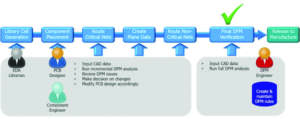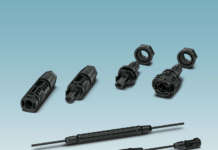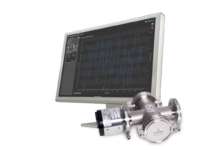Today’s PCBs are extremely complex with consumer demand for electronic products that do more in a smaller form factor, at an affordable cost. These factors drive various creative manufacturing applications. The ideal design for manufacturing (DFM) solution must serve products regardless of its complexity. How do we improve DFM for PCBs? How do we make DFM accessible to more people? How can the DFM process be streamlined with optimized designs released to manufacturing during the initial design process?
Two Fundamental Steps
This is achieved in two steps:
- Simplify the setup and maintenance of DFM rules. If the rules setup is simplified, they are easier to maintain as the board technology and suppliers’ process capabilities evolve. As such, DFM results will yield only true DFM issues that need attention, and no false calls will occur that need a significant amount of time to review.
The DFM rules setup needs to be intuitive to anyone familiar with PCBs. The GUI must facilitate simple setup of the factors, classifications, and constraints required. An intelligent DFM system will also know the hierarchical relationship between different DFM categories with minimal setup, resulting in maximum benefit.
- Put the logic of the DFM process into the software, making it an expert system. Let the DFM software application read the intelligence in the PCB design data to automatically determine the PCB classification and, thus, which DFM rules to apply. The layer count, board thickness, via hole sizes, and construction method are all properties within the CAD data.
Multiple factors affect the DFM rules to be used. For example, for copper weight of the layer, PCB fabricators will add an etch compensation value to each layer, depending on whether it is 0.5, 1, or 2 oz. copper. Thus, for DFM analysis for etch, a different spacing value and line width is used based on copper weight for that layer.
Construction of the PCB is another example. If conventionally laminated in a single step, the manufacturing process tolerances will differ from PCBs constructed using sequential lamination or buildup technology. DFM rules will vary by construction type.

Also, the aspect ratio of the PCB affects the manufacturing process tolerances. PCB fabricators may stack multiple panels on their drill machines to save money. However, if the PCB aspect ratio is too high, panels will need to be drilled separately, which makes the cost of the boards higher. Designers need to know the acceptable aspect ratios their fabricators can comfortably accommodate.
A smart system incorporates the knowledge of a subject matter expert into the application software. It behooves the electronics industry to employ expert systems whenever possible. DFM for PCBs needs an expert system approach so that every company, regardless of size, can become more efficient and cost-effective.





